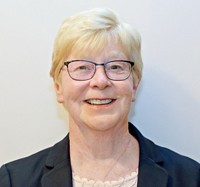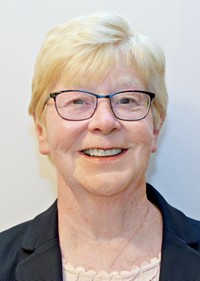Advertisement
Grab your lab coat. Let's get started
Welcome!
Welcome!
Create an account below to get 6 C&EN articles per month, receive newsletters and more - all free.
It seems this is your first time logging in online. Please enter the following information to continue.
As an ACS member you automatically get access to this site. All we need is few more details to create your reading experience.
Not you? Sign in with a different account.
Not you? Sign in with a different account.
ERROR 1
ERROR 1
ERROR 2
ERROR 2
ERROR 2
ERROR 2
ERROR 2
Password and Confirm password must match.
If you have an ACS member number, please enter it here so we can link this account to your membership. (optional)
ERROR 2
ACS values your privacy. By submitting your information, you are gaining access to C&EN and subscribing to our weekly newsletter. We use the information you provide to make your reading experience better, and we will never sell your data to third party members.
ACS News
Focus
by Linda Wang
March 24, 2008
| A version of this story appeared in
Volume 86, Issue 12
The American Chemical Society has long demonstrated its commitment to promoting diversity in the chemical profession through the work of some of its various committees, including the Committee on Minority Affairs, the Women Chemists Committee, the Younger Chemists Committee, and the Committee on Chemists with Disabilities.
ACS's Diversity Statement
"The American Chemical Society believes that to remain the premier chemical organization that promotes innovation and advances the chemical sciences requires the empowerment of a diverse and inclusive community of highly skilled chemical professionals regardless of race, gender, age, religion, ethnicity, nationality, sexual orientation, gender expression, gender identity, presence of disabilities, educational background, and other factors. Chemical scientists rely on the American Chemical Society to promote inclusion and diversity in the discipline. To enable scientific progress and maintain its global competitive edge, the American Chemical Society remains committed to inspiring and educating the present and future generations of diverse, innovative, and creative chemical professionals. By promoting inclusion and equity to all, the American Chemical Society will succeed in fostering a diverse community of professionals in the chemical sciences who will be the catalyst for transforming the world through their full participation and intergration into the chemical professions"
Now, ACS has an official Statement on Diversity that serves as a "formal affirmation" of its commitment to this effort, says Carolyn Ribes, past-chair and a founder of the Joint Subcommittee on Diversity, which spearheaded the effort to draft the diversity statement. The ACS Board of Directors approved the statement on Dec. 4, 2007.
Maria Rosenthal, chair of the Joint Subcommittee on Diversity, says that having a diversity statement "will help institutionalize practices that effectively sustain the diversity of ACS and the chemistry professions." For example, she says, "ACS can be the leader in improving access to textbooks and other publications for the visually impaired."
ACS has long recognized the importance of diversity. "Innovation often comes because somebody looks at a problem with a different set of eyes, based on different experiences," Ribes says. "We need to have a diverse workforce and a diverse membership in ACS at all levels to be able to reach our vision."
Ribes notes that one of the biggest challenges in drafting the statement was coming up with language that all the groups agreed upon, because different groups may have slightly different interpretations of the meaning of diversity and inclusion.
Many organizations, especially those that focus on minority groups, already have diversity statements. ACS's diversity statement came about when members of the Joint Subcommittee on Diversity realized that although ACS is a strong supporter of diversity, the society did not have an official statement on diversity.
The joint subcommittee is a natural starting point for such a statement. Formed in early 2006, the joint subcommittee originally consisted of representatives from the Committee on Minority Affairs, Committee on Chemists with Disabilities, Women Chemists Committee, and Younger Chemists Committee.
It soon expanded to include representation from the Committee on Committees, the Committee on Nominations & Elections, the Committee on Technician Affairs, and the Division of Professional Relations.
One of the joint subcommittee's goals this year is to align all the long- and short-range plans of the committees that are represented on the joint subcommittee with the ACS Strategic Plan. In addition, the joint subcommittee will be working with the Office of Legislative & Government Affairs to identify legislative issues that relate to increasing diversity in science, technology, engineering, and mathematics fields. The Joint Subcommittee on Diversity has also created a ChemLuminary Award for Diversity.
Now that ACS has a clear position on diversity and inclusion, the various committees and groups of the society can work in tandem to maximize the impact of their efforts. "Each one of the groups has its own needs and its own agenda, but we also have many things in common," Rosenthal says. "It is those synergies that we want to maximize."
Rosenthal says that having a diversity statement is an important step in ACS's mission to implement diversity and inclusion as core values. "Now we need the participation of our members and the general public to bring it to fruition," she says.
For more information on programs and services offered by the ACS Department of Diversity Programs, e-mail diversity@acs.org, or visit www.acs.org/diversity.






Join the conversation
Contact the reporter
Submit a Letter to the Editor for publication
Engage with us on Twitter